CO₂ Correct developed a carbon footprint tool to determine GHG emissions of many different fruits and vegetables, with a differentiation to country of origin, type of packaging and mode of transport to the importing country. The CO₂ Correct carbon footprint tool was developed in cooperation with CE Delft. CE Delft provided the data to determine carbon footprints for all fruits and vegetables, for different phases of production: the agricultural phase, transport from farm to retail location in the importing country and packaging.
CO₂ Correct calculations will give insights on the carbon footprint that occurs in the entire supply chain from landuse and growth until the product is placed in a shopping basket.
This information gives organisations the insights to change their carbon impact where it has most effect. Sustainability goes beyond that of changing a packaging and CO₂ Correct want to make this information available to anyone who is involved in going sustainable.
In this article we will explain more about the way CO₂ Correct calculates the carbon impact. If you want to know more about this subject feel free to contact us anytime.
Carbon footprint example
(1kg of oranges from Spain imported and sold on the European market)





Carbon Dioxide Equivalent (CO2e)

CO₂ Correct methodology
In determining the carbon footprint of agricultural (vegetable) products for CO2Correct, the whole system from cradle to retail is taken into account. All emissions related to production of inputs such as pesticides and fertilizers, as well as the transport needed to get these to the location of use, are included. For the agricultural phase, inputs such as use of fuels for agricultural machinery and emissions related to use of fertilizers are included in the footprint. Furthermore, in case of land use change and subsequent GHG emissions, such emissions are included in the footprint.
After harvest, products are packaged in one or more packaging solutions.
Products are often exported; retail location and production location are often not situated in the same country. All transport in the production country, in the importing country, and between countries is included in the carbon footprint.
An important aspect of the CO₂ Correct methodology is overcompensation. With overcompensation CO₂ Correct ensures that all GHG emissions are always compensated for. In this document the main methodological issues and choices related to the carbon footprints used in the CO2Correct carbon footprint tool are described.
Carbon footprints were calculated using the IPCC GWP 100a method.
Cultivation
CO2Correct wishes to include a comprehensive list of fruits and vegetables, with the option of cultivation in different countries. Carbon footprints of fruits and vegetables differ between products and countries, but specific footprints are not available for every product from every country. Therefore, available data was used to look at the range in carbon footprints and the aspects which determine the main differences between products. Based on this assessment, products are categorized in 3 groups; low impact, medium impact and high impact. Two aspects which may increase the impact, regardless of group, were identified: greenhouse cultivation and land use change. For these aspects, the tool quantifies an additional carbon footprint.


Greenhouse cultivation
Some fruits and vegetables are cultivated in greenhouses, which may be heated using fossil fuels. In the CO2Correct tool greenhouse cultivation is included as an add-on; users can select greenhouse cultivation. If that is the case, a specific value is allocated to a product. For the products for which no specific footprint is available, a distinction is made between products that grow vertically (high cultivation) and products that do not (flat cultivation). For both categories the product with the highest know carbon footprint in that category is taken as a proxy.
The carbon footprints are based on greenhouses heated with fossil fuels. Like many sectors, this sector is transitioning to more sustainable practices. This is most often done by using geothermal heating instead of combined heat and power generation (using natural gas). Based various research emission reduction of up to 50% can be realized. To ensure overcompensation, a reduction of 30% is assumed in the CO2Correct tool when geothermal heating can be substantiated.
Landuse
Land use change (LUC) is the conversion of one type of land (e.g. forest, agricultural, grassland) to another. In some cases this leads to loss of carbon stored in soils/on land, because the new land use type has lower carbon stocks, for example when forest is converted to agricultural land. Land use change differs per product and country, and is therefore included in the CO2Correct tool as an add-on.


Pack & process
This part of the calculations takes into account the impact on the packing process. Packaging has only a small impact on the total carbon footprint but by chosing the right type of packaging you are able to make a quick reduction in your carbon footprint.
For most types of vegetables and fruit, two types of packaging are used. The products are first packed in small portions in punnets, bags or nets and subsequently multiple of these small portions are packed together in a large cardboard box.
In the CO2Correct carbon footprint tool, the amount of packaging material is entered. For fossil fuel based materials, the emissions of incineration at the end of life are included in the carbon footprint. For biobased materials, as the carbon is sourced from short cyclic biomass, incineration does not contribute to the carbon footprint. The carbon footprint of PET minus the carbon footprint of incineration of PET is used as a proxy for the carbon footprint of biobased plastics. All data on carbon footprints of materials and production processes was taken from the Ecoinvent database (Version 3.5), except for rPET, which was based on internal data from CE Delft.
Transport
After cultivation, products are transported to the retail location. In case the retail location is in the country of origin of the product, only ‘domestic transport’ is included in the carbon footprint. In case the retail location is in another country than the country of origin, both domestic transport (in country of origin and retail country) and international transport are included in the carbon footprint.


Retail & storage
For the part of retail & storage we take in to account the transport that takes place from the importing country to the retailer. Besides this we also take a look at the impact of the cold storage of the fruit or vegetable.
Some products are only cultivated during short periods and stored in a cold environment to ensure the availability of fresh products the whole year round (or during an extended period). Cooling these storage rooms requires energy. Average storing periods are determined by CO2Correct, based on expert opinion.
Overview of calculation
In this article you have been able to read how our calculations have been set-up and how we can guarantee that we are compensating sufficient carbon impact. Should there still be any questions please feel free to contact us. For CO2 Correct it is most important to remain transparent so any type of questions are welcome and we will answer them as soon as possible.
To summarise the information given in this article we have made a short overview of all aspects that are account for in our impact calculations.

- Landuse change
- Greenhouse emissions by changes in landuse

- Production of fertilizers and pesticides
- Production of packaging for fertilizers and pesticides
- Transport of fertilizers and pesticides to the farm
- Greenhouse gas emissions from fertilizers and manure on land
- Production of vehicles used for cultivation
- Building of barns for storing vehicles
- Fuel used for cultivation vehicles
- Fuel used for irrigation procces
- Production of irrigation system
- Greenhouse production
- Greenhouse heating energy use

- Mining of RAW materials
- Production of RAW materials
- Transport of RAW materials
- Energy use during production
- Additional material resources used for production
- Processing of waste from production
- Factories and machinery needed for production

- Fuel consumption
- Production of transport vehicle
- Maintenance
- Facilities (harbor etc..)

- Electricity used for cold storage
- Transport to retail destination
CO₂ Correct B.V. | Weestmeesterstraat 5 | 2645 MC Delfgauw – the Netherlands | E: info@co2correct.com | T: +31 (0)6 51 34 86 14
CO₂ Correct B.V. is registered with the Dutch chamber of commerce no. 78399378 | Read more about our Privacy policy or Code of conduct
